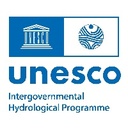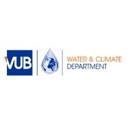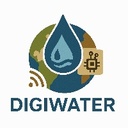Executive Secretary

XIV International Symposium on Structures, Geotechnics and Construction Materials
STRUCTURES 2025
Workshop Water Resilience through Digitization
Abstract
In 2017, water management was implemented in the country using watersheds as the reference framework. Until then, it had been limited to eight nationally significant basins, prioritized for their socioeconomic, environmental, or conservation relevance. In our province, information was only shared with Cienfuegos and Sancti Spíritus regarding the Zaza and Hanabanilla basins, which were managed by those territories.
This new approach involved disaggregating the Water Balance for planning and control purposes, considering the most important basins in the province: Sagua la Grande and Sagua la Chica, as well as other basins shared with Cienfuegos, Sancti Spíritus, and Matanzas, to which information is systematically contributed.
Watershed-level management represented progress toward the integration of this hydrological unit. It was necessary to define the potential and exploitable water resources, the infrastructure, and the users, which required detailed work, especially in border areas with undefined watersheds or those that do not align with underground basins.
In this context, the rehabilitation and maintenance of hydraulic works are also managed, aiming to ensure water balance compliance with efficiency and sustainability.
This report presents summaries of the information collected or generated, particularly regarding users, demands, activity levels, sources, economic results, control mechanisms, and indicators aligned with the Sustainable Development Goals (SDGs) through 2030. In addition, a brief overview of automation in water management is included.
Resumen
En 2017 se implementó en el país la gestión hídrica tomando como referencia las cuencas hidrográficas. Hasta entonces, esta se limitaba a ocho cuencas de interés nacional, priorizadas por su relevancia socioeconómica, ambiental o de preservación. En nuestra provincia, solo se compartía información con Cienfuegos y Sancti Spíritus sobre las cuencas Zaza y Hanabanilla, administradas por esos territorios.
Este nuevo enfoque implicó desagregar el Balance de Agua para planificación y control, considerando las cuencas más importantes de la provincia: Sagua la Grande y Sagua la Chica, así como otras cuencas compartidas con Cienfuegos, Sancti Spíritus y Matanzas, a las cuales se tributa información sistemáticamente.
La gestión a nivel de cuenca representó un avance hacia la integración de esta unidad hidrológica. Fue necesario precisar los recursos hídricos potenciales y explotables, las infraestructuras y los usuarios, lo que exigió un trabajo minucioso, especialmente en zonas limítrofes con parteaguas no definidos o que no coinciden con las cuencas subterráneas.
En este contexto, también se gestionan la rehabilitación y el mantenimiento de obras hidráulicas, en función de garantizar el cumplimiento del balance de agua con eficiencia y sostenibilidad.
Este trabajo presenta resúmenes de la información recopilada o elaborada, especialmente sobre usuarios, demandas, niveles de actividad, fuentes, resultados económicos, mecanismos de control e indicadores alineados con los Objetivos de Desarrollo Sostenible hasta 2030. Además, se incluye una breve reseña sobre la automatización en la gestión hídrica.
About The Speaker

Ing. Raquel Luciana Rodríguez Ruiz

Discussion










